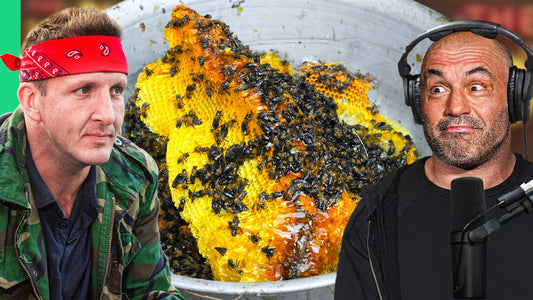Mad Honey Scams and How to Protect Yourself: A Guide for Buyers
Partager
Mad honey, known for its unique properties and medicinal benefits, is gaining global popularity. Unfortunately, with this rise in demand, scammers are exploiting unsuspecting buyers through deceptive practices. To help you avoid falling into these traps, here’s a guide on the common scams and how to prevent them.
Common Mad Honey Scams
- Cloned Websites and Fake Ads Scammers often create cloned websites that appear legitimate at first glance. These sites use deceptive ads, selling subpar products or nothing at all. They often mimic well-known brands, making it difficult for customers to differentiate between real and fake sellers.
- Drop Shipping Scams While drop shipping can be effective for various products, it’s risky for food items like mad honey. Many scam artists use drop shipping without proper sourcing, meaning the honey could be of low quality, adulterated, or even harmful. Buyers end up receiving inferior products from unknown suppliers.
- White-Labeled and Untraceable Products Some sellers offer white-labeled mad honey, hiding the true origin. Without knowing where the product is sourced, you can’t be sure of its quality or authenticity. Scammers often operate with little to no information about the origin or producer of the honey, leaving buyers in the dark.
How to Spot and Prevent Mad Honey Scams
- Check Verified Reviews Genuine sellers usually have reviews from real customers on trusted third-party sites like Judge.me or Trustpilot. Always read these reviews to verify the seller's reputation. Look for detailed feedback rather than generic comments. If reviews seem overly positive with little substance, that could be a red flag.
- Verify Physical Office or Store Locations Does the seller provide a real office or store location? Having a legitimate address adds credibility. If the website only lists a vague location or offers no address, it’s time to be cautious. Authentic sellers and resellers are transparent about their operations and may even offer store visits.
- Look for Comprehensive Contact Information Trustworthy sellers should provide multiple ways to contact them, not just a contact form or email. Look for phone numbers, live chat options, or social media channels where you can engage with the seller directly. If you can’t find any other contact method except an email form, reconsider your purchase.
- Examine the Product Details Whether you’re buying from a direct seller or a reseller, ensure the product has all the necessary details like origin, packaging information, and certifications. If a reseller doesn’t provide this information, it’s a sign they may be dealing with questionable suppliers.
- Avoid Sellers with Vague or Nonexistent Reviews Even if the website looks professional, always take time to read reviews from other customers. If the site has no reviews or the reviews seem suspicious, proceed with caution. Real customers tend to leave detailed comments about their experiences, both good and bad.
Why Drop Shipping is Risky for Food Products
Drop shipping can be an effective method for selling products, but when it comes to food items like mad honey, it’s crucial to know the source. You should always verify the information of both the seller and the supplier, especially for perishable or consumable goods.
For mad honey, it’s important to ensure that both the reseller and the original supplier have transparent, verifiable details. Sellers who are vague about their supply chain may not be trustworthy.
Stay Vigilant
With the rise in demand for mad honey, scams are becoming more common. By checking reviews, verifying contact information, ensuring transparency about the product’s origin, and avoiding drop-shipped food items from unverified sources, you can protect yourself from falling victim to these scams.
When in doubt, take the time to research the seller. A little effort can go a long way in ensuring you get the authentic, high-quality mad honey you deserve.
Explore our 2024 harvest and collections : Mad Honey Nepal


